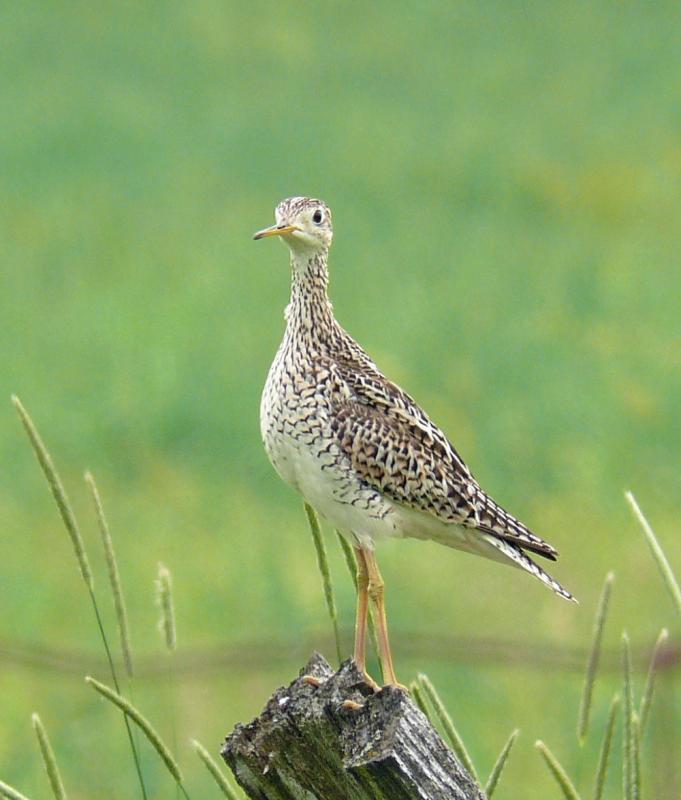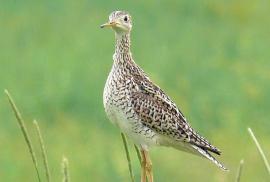Guide to Boreal Birds
Overview
Formerly abundant, this attractive bird of open grasslands was shot in such large numbers for food and sport that it became very scarce. Now given complete protection, it has increased once again; its principal danger is now habitat destruction. The Upland Sandpiper often flies with wings held stiffly in a downward curve, like a Spotted Sandpiper, especially on its nesting grounds. When alighting, the "Grass Plover," as it was known to hunters, holds its wings over its back before folding them down in a resting position. In old books this bird is called the "Upland Plover."
Description
11-12 1/2" (28-32 cm). A sandpiper of open meadows with long yellowish legs, slender neck and small head, and short bill. Upperparts brown and scaly, underparts streaked and barred. Ends of wings are dark in flight; tail long and wedge-shaped. Often holds wings upward briefly on alighting, exposing black and white barring on underwing.
Voice
Alarm call a mellow quip-ip-ip-ip. On breeding grounds and at night during migration, a long, mournful, rolling whistle.
Nesting
4 pinkish-buff eggs, with brown spots, in a grass-lined nest in a hollow on the ground.
Habitat
Breeds in open grasslands, prairies, and hayfields, also grassy airfields; generally frequents open country during migration.
Range/Migration
Breeds from Alaska east to New Brunswick and south to northeastern Oregon, Oklahoma, and Virginia. Winters in southern South America.



